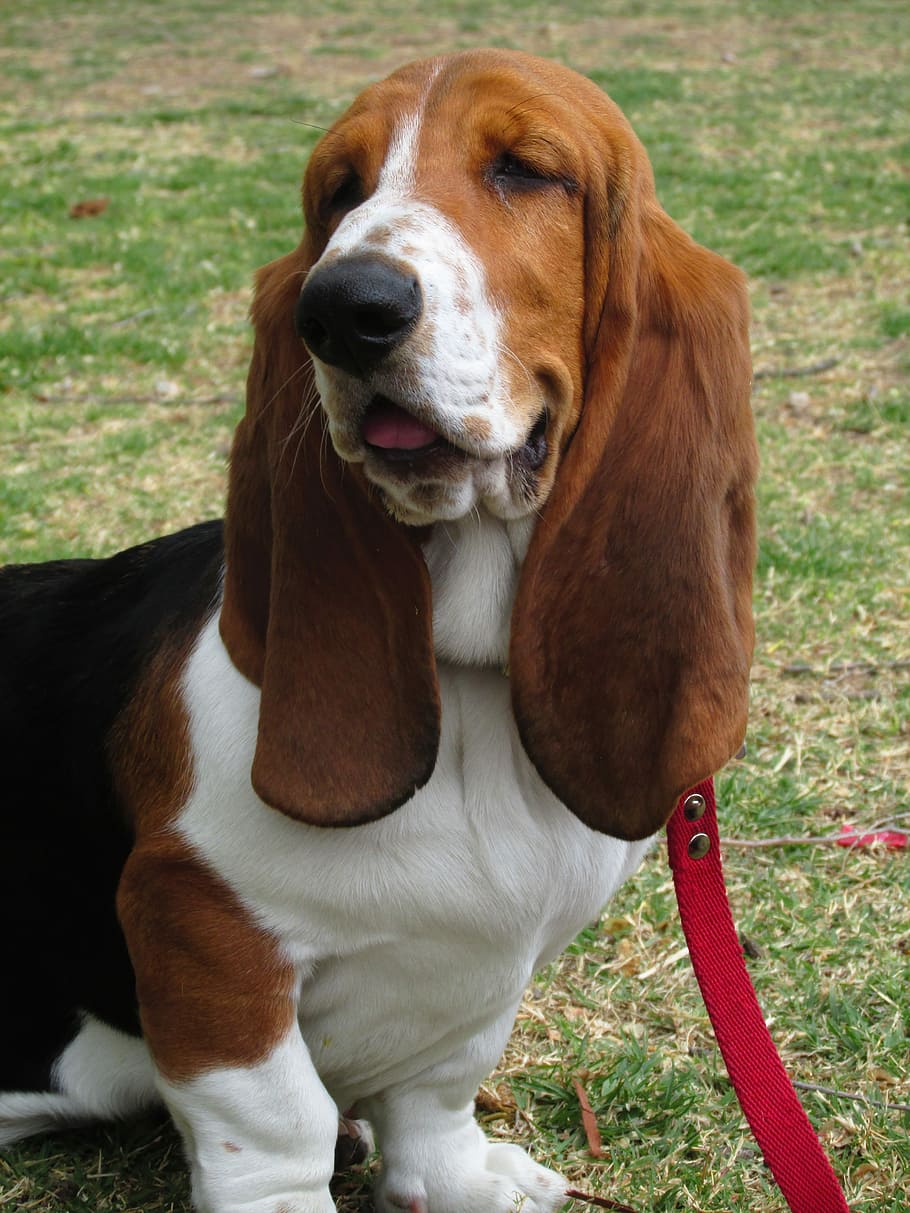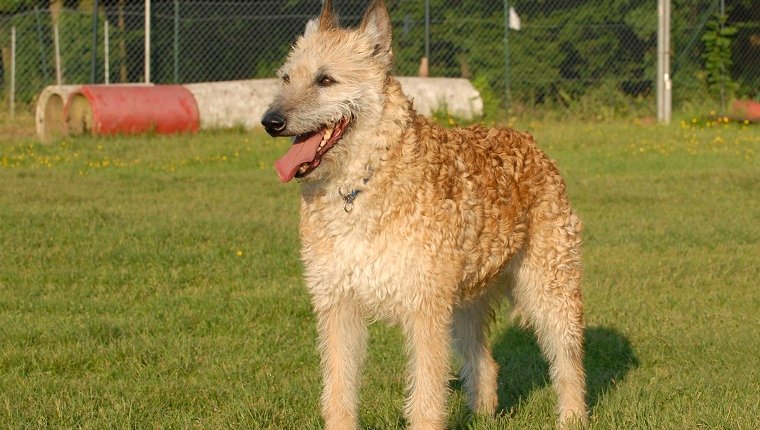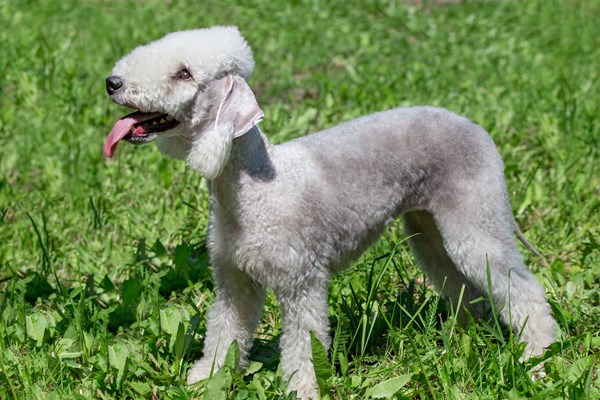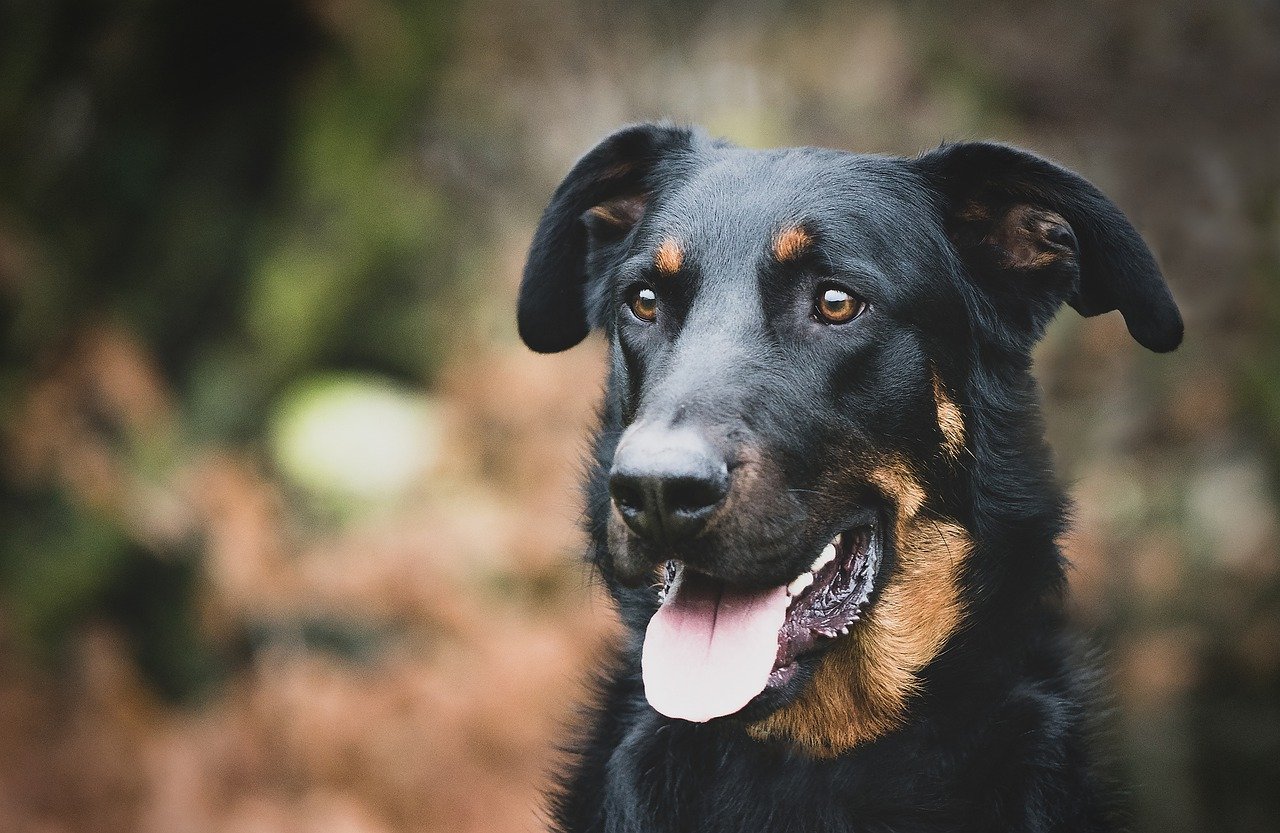Basset Artesien Normand Dog Overview
The Basset Artesien Normand (B.A.N.) is known as a well-built, long dog with a body length to wither height ratio of approximately 8:5.
It is stable and well-balanced. It is a sound breed that moves smoothly and has a lot of gaiety.
Due to the fact that the Basset Artesien Normand is primarily a hunting dog, scars (the consequence of honorable wounds) shall not be considered flaws or penalized by Judges.
This includes scratches, nicks, notches, and frayed ears from working in brush, tall grass, and so on. Hounds that lack substance should be punished.
The breed is exceptionally intelligent and brimming with vitality. They are often obedient and ready to please.
This dog’s entire body demonstrates a lengthy history of pure breeding and conformity to the standard.
Basset Artesien Normand Highlights
- Fawn, wheaten, and red wheaten are the predominant hues of the Basset Fauve de Bretagne.
- Their fur is wiry, thick, and rough to touch. These puppies are not suitable for people who suffer from allergies, and they require a lot of grooming.
- When it comes to training, Basset Fauve de Bretagnes might be a little stubborn, but they react well to gentle and consistent owners who know what they’re doing.
- These dogs are normally friendly with everyone, but if a stranger approaches the door, they will alert you. They’re not supposed to be watchdogs, yet they’re tough and will always protect their families.
- The Basset Fauve de Bretagne has a lot of energy, so they’re unlikely to gain weight unless they don’t receive enough activity. Mental stimulation is just as vital to them as physical exercise since they are intelligent.
Basset Artesien Normand Breed Features & Ratings:
Rated base on a 5 Star Scale
ENERGY LEVEL: 4 Star
EXERCISE REQUIREMENTS: 4 Star
PLAYFULNESS: 5 Star
AFFECTION LEVEL: 5 Star
FRIENDLINESS TO DOGS: 5 Star
FRIENDLINESS TO OTHER PETS: 5 Star
FRIENDLINESS TO STRANGERS: 5 Star
WATCHFULNESS: 5 Star
EASE OF TRAINING: 5 Star
GROOMING REQUIREMENTS: 5 Star
HEAT SENSITIVITY: 5 Star
VOCALITY 5 Star
Basset Artesien Normand Characteristics:
- Dog Breed Group: Working Dogs
- Height: 12-14 inches (30-36 cm)
- Weight: 33-44 pounds (15-20 kg)
- Life Span: 13 to 15 years
- Type: Purebred
- AREA OF ORIGIN: France
- DATE OF ORIGIN:
- OTHER NAMES: Basset Artésien Normand, BAN
- Temperament: Gentle, Courageous, Intelligent, Obedience
- Activities:
- Color: Black & White, Fawn, Fawn & White
- Litter Size: 4 to 6 puppies
- Puppy Prices: Average $1200 – $1500 USD
Basset Artesien Normand Health:
The Basset Artésian Normand lives an average of 12 to 14 years and is one of the healthiest Basset breeds.
Despite this, it is susceptible to a variety of health problems – despite the fact that there is scant study and literature on the illnesses that can affect the breed and the extent to which these disorders exist within the breed as a whole.
However, we may speculate on some of the breed’s potential difficulties, which may include the following:
Disease of the Intervertebral Disc
This disorder, which affects a large number of long-backed, short-legged breeds, is caused by herniation of the intervertebral discs that cushion the vertebrae.
This herniation compresses the spinal cord and injures the nerves, resulting in neurological complications.
The intensity of the damage varies, which has a significant impact on the likelihood of recovery. Surgery is frequently required to resolve the issue, although it is not always successful, and paralysis can be permanent.
Dysplasia of the Hip
Hip dysplasia is a condition in which the hips develop abnormally, resulting in joint issues later in life. Hips of dogs destined for breeding should be radiographed and graded by professionals. The lower the score, the less evidence of hip dysplasia. Hip dysplasia is largely hereditary in origin but can be influenced by environmental factors as well.
Entropion/Ectropion
These diseases develop when the eyelids tilt inwards or outwards as a result of extra skin. This either irritates the eye’s surface or causes the eye to dry up more than usual. Both illnesses induce discomfort and, if left untreated, can result in irreversible damage to the eye. Surgery may be necessary in extreme situations.
Skin Issues
Excessive skin folds can predispose the Basset Artésien Normand to skin infections, as air cannot flow freely through the folds, causing bacteria to grow up. Finally, treatment is focused on keeping any skin folds as clean as possible through proper hygiene.
Infections of the Ear
Due to its long ears and tiny ear canals, the Basset Artésien Normand is prone to ear infections. Similar to the skin, this combination of physical characteristics inhibits air circulation, increasing bacteria build-up. Ear infections can be extremely painful and uncomfortable, and the best way to avoid them is through prevention and early treatment.
Basset Artesien Normand Grooming:
Artesien Basset Normands might be a little fussy when it comes to grooming, but they are not difficult to care for. Brush their coat once a week to keep shedding to a minimum.
The most difficult part of their grooming needs is maintaining their nails. Due to the breed’s low activity level, their nails do not normally remain filed down.
You will need to cut their nails to prevent them from growing uncomfortably long.
Basset Artesien Normand Exercise:
Basset Artesien Normands are extremely low maintenance in terms of exercise.
This breed has a reputation for being extremely sluggish, with significantly lower energy levels than other breeds. It is recommended for Basset Artesien Normands to receive only 30 minutes of activity a day.
You may take your Basset Artesien Normand for a walk, but the walk should not be very long.
Typically, this breed will communicate their fatigue to you.
Basset Artesien Normand Training:
Although this dog is quite gregarious, it does have its own thoughts. As a result, training a Basset Artesien Normand might be challenging.
These canines prefer to do their own thing and may wander off when bored. To achieve the finest results, you must train them early on.
When training a Basset Artesien Normand for the first time, it can be challenging.
However, once the dog gains more trust in you and masters the orders, it will likely begin listening and remaining obedient to your commands.
Basset Artesien Normand Food and Nutrition:
Basset Artesien Normands are known for their laziness. As a result, a Basset Artesien Normand must be kept on a careful diet.
Choose a dog meal that is heavy in protein and fat but low in carbohydrates. Wet dog food is considered to be the best option because it has the fewest carbs.
Likewise, avoid feeding Basset Artesien Normands an excessive amount of table leftovers. While the occasional treat is always pleasant, these dogs can quickly gain weight due to their laid-back disposition.
Feeding them an excessive amount of table scraps will inevitably result in the dog becoming obese.
Basset Artesien Normand Temperament and Personality:
In terms of sociability, Basset Artesien Normands are one of the best family dogs. These canines are pack dogs, which means they get along well with other people, children, and pets.
Almost any home will benefit greatly from the addition of a Basset Artesien Normand.
Simultaneously, these dogs are extremely intelligent. They enjoy mental stimulation and will occasionally stray to satisfy their urge to smell and see new things.
Basset Artesien Normand Care/Upkeep:
Basset Artesien Normands require daily physical activity to maintain their fitness levels, recharge their brains, and maintain their health.
Daily exercise also significantly aids basset artesien normands in overcoming ennui, which frequently results in challenging behavior.
A little fun and games will satisfy the majority of your basset artesien normand’s digging, chasing, herding, chewing, and retrieving urges.
Exercise requirements vary according to your basset artesien normand’s health status and age—but ten minutes in the backyard and a couple of walks around the block each day are definitely insufficient.
If your basset artesien normand is an adolescent aged 6 to 18 months, his requirements will be slightly higher.
Basset Artesien Normand Relationship with Children and Other Pets
Artesien Basset Normands make excellent family dogs due to their gentle demeanor and sociability.
They are devoted to their owners and are quite gentle with children. There is little reason to fear this breed being violent toward anyone in your household.
Naturally, any interaction between a dog and a youngster should be supervised. This will guarantee that the child interacts appropriately with the dog, preventing it from becoming irritated or hostile.
Additionally, attempt to educate your youngster proper dog play techniques.
Basset Artesien Normand Names
| Rank | Boy Names | Girl Names |
| 01 | Buddy | Molly |
| 02 | Zeus | Bella |
| 03 | Toby | Callie |
| 04 | Oscar | Luna |
| 05 | Rocky | Missie |
| 06 | Baxter | Layla |
| 07 | Sammy | Sandy |
| 08 | Beau | Stella |
| 09 | Rocco | Gracie |
| 10 | Moose | Penny |
All About Basset Artesien Normand
The Basset Artésien Normand is a medium-sized scent dog related to the Basset and Artois Hounds.
It was bred to hunt with humans on foot and is an exceptional tracking dog capable of operating in dense forest and foliage.
Today, the breed is more frequently kept as a companion, and it makes a great family pet due to its joyful and friendly personality, as well as its tolerance for youngsters.
It is also a sociable creature that gets along well with other dogs, but it’s hunting instincts preclude it from cohabiting with other small animals, such as cats, unless they are socialized from an early age.
The Basset Artésien Normand is a highly intelligent and obedient hound. This, paired with its enthusiasm to please, makes training relatively easy; yet, it is prone to picking up on odours and following them.
Because the breed is lively and requires a good deal of walking, it is best suited to rural living.
It has a short, easy-to-care-for coat, but is prone to ear and skin infections, as well as other health concerns, making it critical to select puppies from healthy parents with few skin folds.
Basset Artesien Normand History:
The Basset Artésien Normand, abbreviated BAN, is a medium-sized, short-legged breed related to the more well-known Basset Hound.
These common ancestors developed achondroplastic dwarfism, which was subsequently used to create the modern breeds we know today.
The distinction between the well-known Basset Hound and the Basset Artésien Normand is that the latter was developed by French breeders who sought a lighter, more agile physique with a greater emphasis on hunting ability.
This breeding began near the end of the nineteenth century, but another divide occurred, resulting in two French Basset breeds with distinct front legs.
Louis Lane bred the Basset Artésien Normand with crooked front legs from the straight-legged Artois Hound.
The breed is recognized by the Fédération Cynologique Internationale and the United Kennel Club but is not recognized by the United Kingdom Kennel Club at the time of writing.
The Basset Artésien Normand is a scent dog historically bred to operate alongside the hunter on foot and hunt small game like rabbits and hares alone or in a pack.
The breed’s compact stature is intended to enable it to work in dense undergrowth where larger dogs would struggle, tracking and flushing out animals.
However, the breed is far more popular as a companion now and makes an excellent family pet, although it is uncommon to find an example of the breed outside of its home in France.
Where to Adopt Basset Artesien Normand:
Because the Basset Fauve de Bretagne is a somewhat rare breed, it may be difficult to find a breed-specific rescue.
However, you can always check with your local shelter, and you may want to try a rescue that caters to all types of dogs.
You can take a look at the following:
More Dog Breeds and Further Research:
If you are interested in this breed please take time to read about these related breeds:
Basset Artesien Normand Fun Facts:
- Even though this dog has a history that dates back to the 1800s, the breed is not recognized by the AKC.
- Basset Artesien Normands are not known for being aggressive to dogs and most other pets.
- Basset Artesien Normands are great family dogs because they are gentle and sociable.
Frequently Asked Questions (FAQs):
Unfortunately, this lovely dog is not good for allergy sufferers.
The Basset Artesian is a medium-sized dog with a light frame that typically weighs between 31 and 40 pounds (14-18 kg) and stands between 10 and 14 inches (25–36 cm) tall. Orange and white are the hues of a true Basset Artesian’s coat. Orange, tan, and white are the primary colors. Breeders favor white feet in general.




